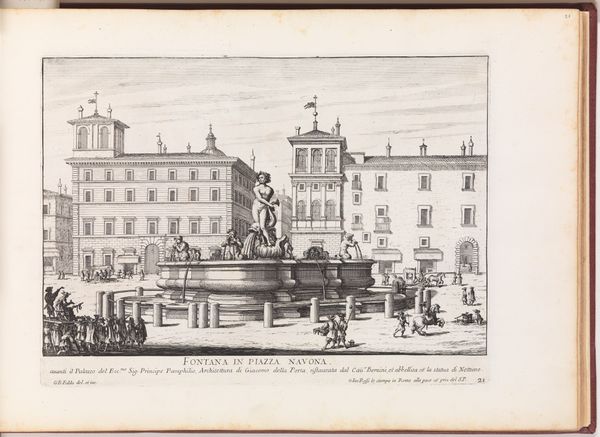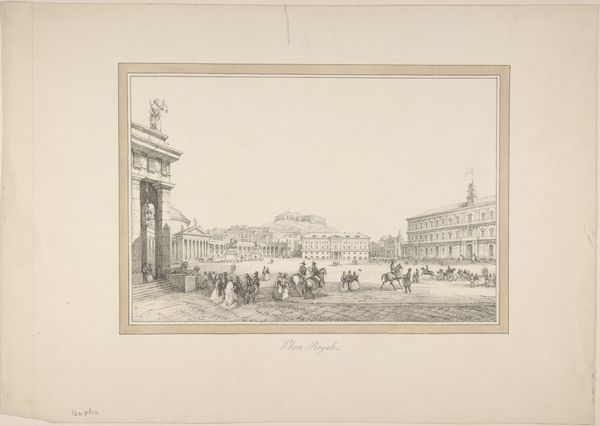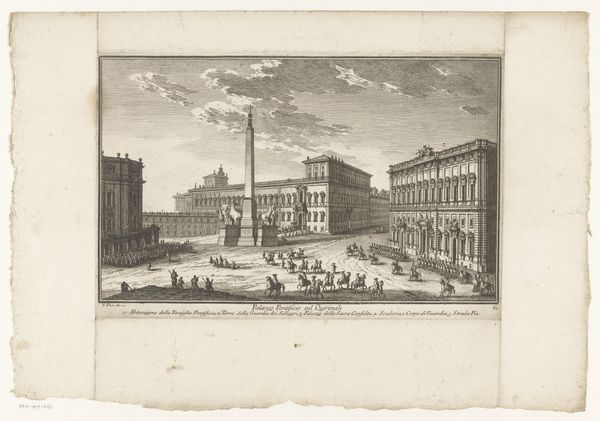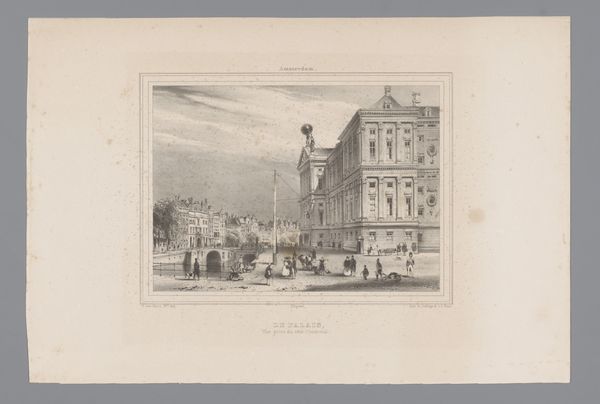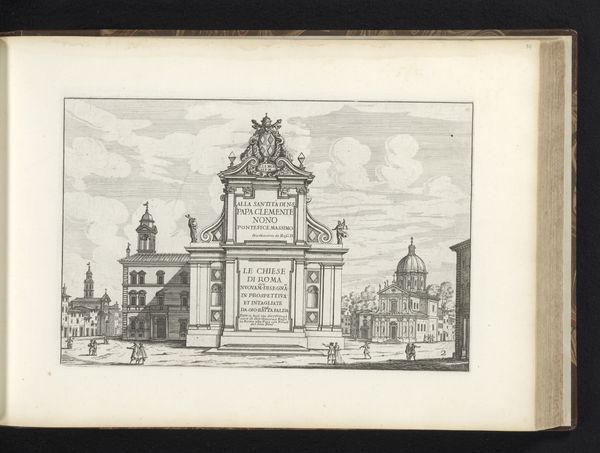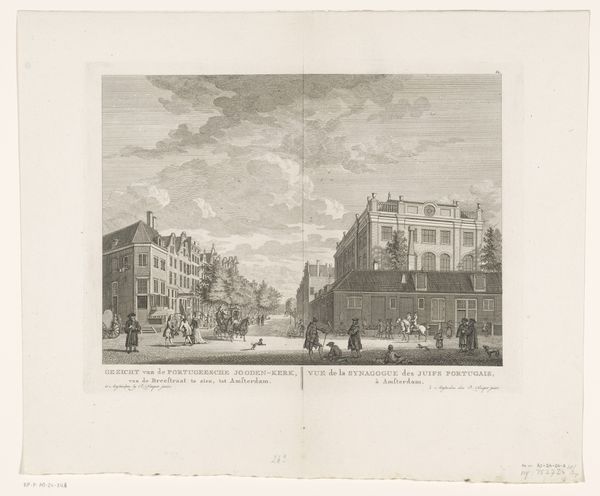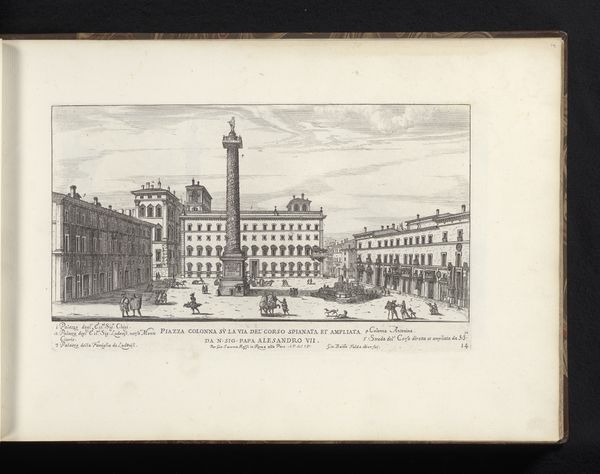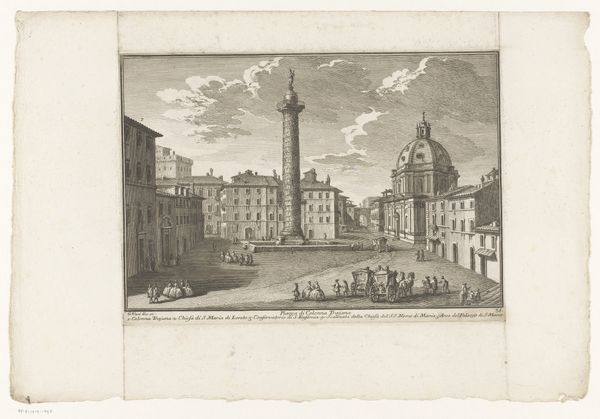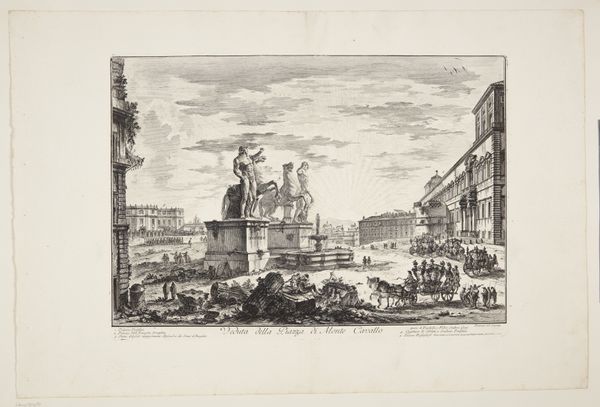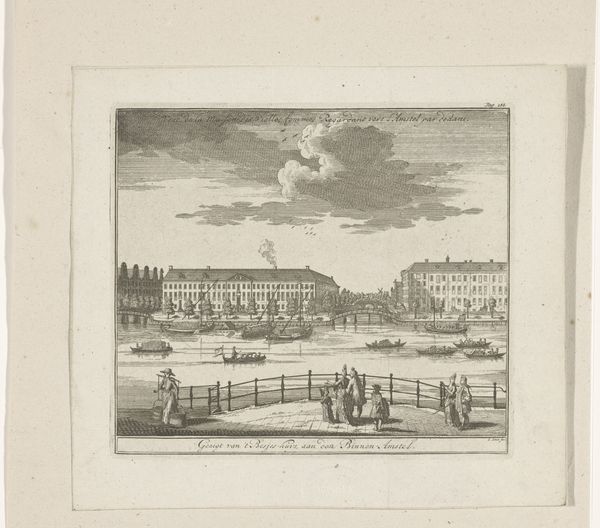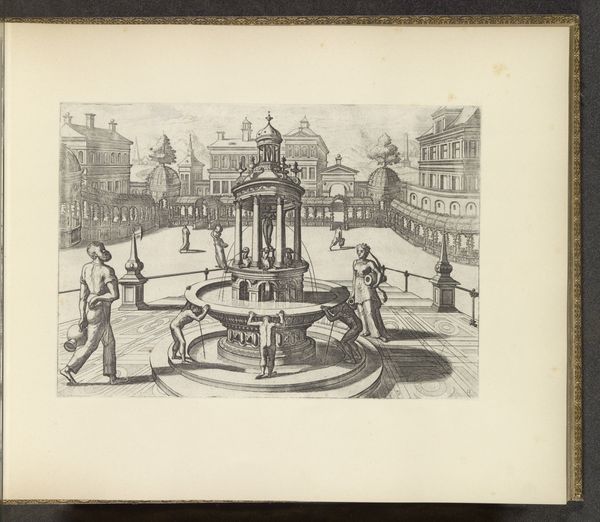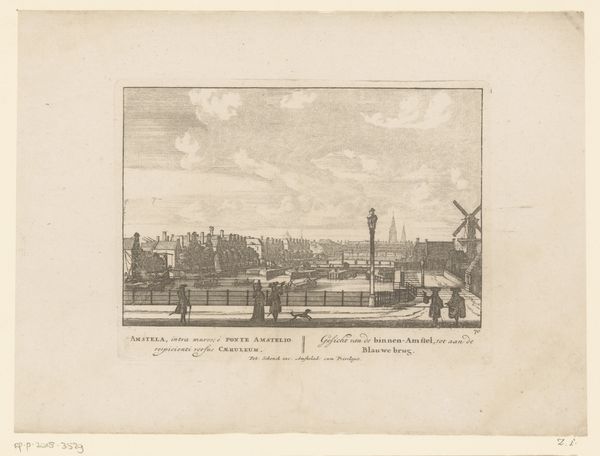
Gezicht op het monument met het beeld van Karel I, koning van Engeland op Charing Cross 1720 - 1731
0:00
0:00
suttonnicholls
Rijksmuseum
drawing, print, ink, engraving
#
drawing
#
baroque
# print
#
ink
#
cityscape
#
history-painting
#
engraving
Dimensions: height 343 mm, width 464 mm
Copyright: Rijks Museum: Open Domain
Editor: Here we have Sutton Nicholls' "Gezicht op het monument met het beeld van Karel I, koning van Engeland op Charing Cross," created between 1720 and 1731. It's an engraving printed in ink, giving the cityscape a crisp, almost architectural feel. The monument dominates the composition, yet the surrounding city seems equally important. How do you approach analyzing this print? Curator: Focusing on the formal elements, notice how Nicholls meticulously employs line and tone. The composition exhibits a distinct hierarchical structure, where the monument's placement dictates the city's spatial organization. Note the engraving technique: its precision creates textures which delineate stone from fabric, statue from cityscape, which underscores a powerful tension between permanence and transience. The buildings recede into the distance through a diminishing scale and clarity, framing the statue of King Charles on horseback. It’s essentially a study in controlled perspective. Editor: I see that now, the controlled perspective really focuses your attention. It almost feels like a stage set. Curator: Precisely. Consider the monument's position. It punctuates the visual field vertically and its shape mirrors the verticals found in the city's architectural elements, creating visual unity within what otherwise appears disparate elements on first glance. Do you perceive an interplay of light and shadow that further articulates spatial depth? Editor: I do, especially around the statue and how it contrasts with the plinth. What strikes me, now that you mention the statue itself, is how the city seems to serve the monument. Curator: Exactly. The city and the monument, the organic and geometric all contribute to the formal logic and intellectual conceits. This reveals a conscious artistic agenda operating well beyond mere representation. Ultimately, we are dealing with calculated visual architecture—the framework of Nicholls’ statement. Editor: So, it's more about the composition and artistic choices than the historical scene? Curator: Precisely. It's the structural harmony— the intrinsic elements working together—that offer its meaning and power. Editor: I've certainly gained a new perspective on seeing, and now understanding the picture as a whole.
Comments
No comments
Be the first to comment and join the conversation on the ultimate creative platform.

